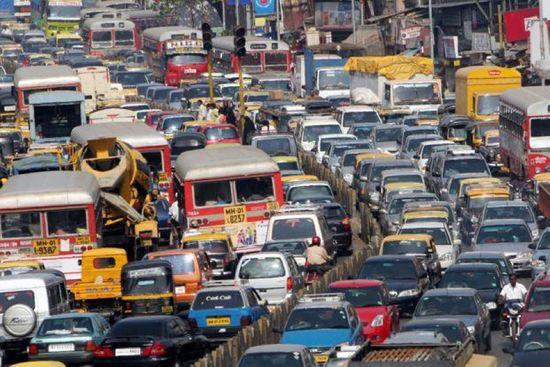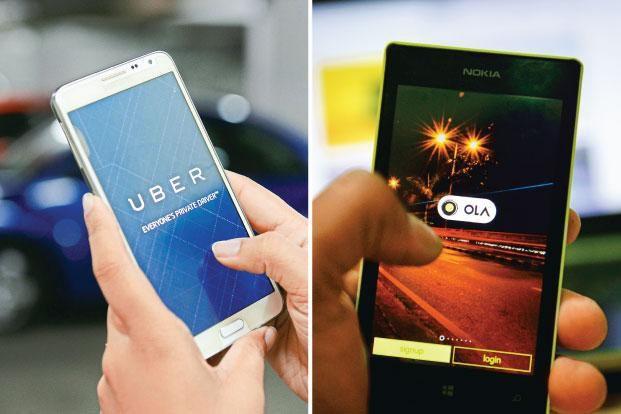Power makes people lazy, absolute power makes people absolutely lazy.
Editor’s note: This article comes from WeChat public account “brain polar body” (ID: unity007) , author | Tibetan fox.
In the countdown to 2019, the annual meetings of domestic Internet companies that sell miserably or chicken blood will also be scheduled. Obviously, the Indian company next door does not have such a New Year atmosphere and is still struggling for good news.
Recent news is that Ola, the ride-hailing software company with the highest market share in India, is also one of the most promising consumer companies in India.
India has become an important global force in the field of taxis, which may be something many people did not expect. Although it can’t pull its sword eastward to shake the pattern of China’s domestic taxi market, it can make our taxi software feel the taste of change.
The bumpy growth history of Indian travel giants
In the past year, various taxi giants in the two major markets of China and the United States have either bald in public opinion battles or have worked hard to make money for listing. Unexpectedly, Ola, India’s “top spot” in the field of ride-hailing, appeared on the international timetable so early than expected.
There is no shortage of capital. Before this year, Ola has made several large-scale financing news.
In February, it was reported that Ola was conducting a $ 1 billion round of J financing, including Flipkart co-founder Bansal’s 1.5 billion rupees (about 20.96 million US dollars). Not long ago, it received another $ 300 million investment from Hyundai Motor Company of South Korea and Kia Motors Corp of Kia. According to foreign media reports, the 150-200 million US dollars financing with Microsoft has also entered the final stage of negotiations. Since its establishment, Ola has received a total of about $ 3.5 billion in investment, and there are many Chinese Internet giants such as Tencent and Didi behind it. In this year’s Internet venture capital market, there are not many lucky people like Ola.
Even Ola Electric, a new energy-sharing car rental subsidiary of Ola, got $ 250 million from Softbank in the middle of the year and became India’s new unicorn.
Why does Ola win? Perhaps it has to be traced back to the beginning of its establishment.
Fat House, although I have not been to India, it is not difficult to see the depth of the Indian people’s travels from various film and television drama works. The fancy interspersed scene of motorcycle rickshaw is really impressive. The emergence of a ride-hailing platform and a scale market of 1 billion people is undoubtedly a social effect and commercial value.Good idea for a good harvest.
 < / p>
< / p>
In 2010, Bhavish Aggarwal, an Indian who was taken off the bus because he refused to increase the price of taxi drivers, was determined to change his travel company to a Uber taxi platform. He and partner Ankit Bhati founded Ola Cabs in Bangalore. . The following year, they received their first angel funds.
Ola barely encountered many obstacles during her growth period. The shared travel model quickly defeated the traditional rental market that occupied the mainstream at that time. When Meru Cabs and Mega Cabs on the Indian market could only book taxis by phone, Ola could already achieve point-to-point transfers through smartphones, and launched remote areas And extended services such as hourly billing packages.
From 2011 to 2014, Ola has successively obtained successive investments from Tiger Fund, Jingwei Venture Capital, Sequoia Capital, SoftBank, etc. In 2013, global travel represented Uber in cities such as New Delhi and Mumbai, but the services for the high-end market were once treated coldly. When Uber decided to launch a battle for the Indian market in 2015, its share was only 5%, and Ola had an absolute advantage in the scale of local users.
 < / p>
< / p>
Ola’s second phase is a “sister battle” with Uber in the local market.
In 2015, Ola quickly integrated smaller competitors in the market at the time, such as TaxiForSure, and Uber invested a billion dollars in subsidies in the Indian market. It also made small and medium-sized enterprises have no place to stand. At this point, the dual hegemony model officially started. If you use one sentence to describe this situation, it will probably be-Uber is vertical and Ola is horizontal.
Uber in India started to abandon the original high-end line, began to corporal corporal, and opened up the mass market. For example, the original persistent electronic payment slowed down, and the cash payment arrangement attracted a large number of ordinary users who did not have credit cards or were unwilling to use debit cards. At the same time, the price of UberGo has also droppedla has previously gained around 7 million users in the UK. At the same time, Ola also increased the actual income of the actual people by “charging a lower commission”. At present, Ola’s plan to recruit 50,000 drivers in London is not difficult. This has exceeded Uber’s current scale of operations.
Of course, this does not mean that Ola will definitely win against Uber in a non-home area.
It should be noted that Ola ’s “profit-making” driver ’s behavior cannot be maintained for a long time. According to the IPO plan for about 2 years, Ola must make his profit statement look good. Once subsidized drivers’ behavior begins to be discounted, if there is no updated service or technical support, will the public change from boycotting Uber to boycotting Ola, I am afraid that it is a circle where the travel giants cannot jump out.
At the same time, Ola wants to develop derivative services, such as delivery and delivery, express delivery in the same city, etc., which have been repeatedly frustrated in the Indian local market, which caused it to shut down the service quickly due to losses. In 2017, SoftBank also lowered Ola Cabs’ valuation due to financial losses and financing decision issues.
At the same time, Uber continues to increase its capital in India, coupled with the slowdown in the growth of the Indian travel market. Once Uber surprises at home, will Ola’s overseas expansion situation shrink again, and the bamboo basket will also have to draw water. Put a question mark.
All in all, although Ola is currently holding India’s base camp, it will be a tougher fight for Ola to show his fists in a foreign country. After all, strong dragons such as Uber are struggling in Europe, and Ola, who won with localization, is not so easy to change the rules.
Born from sorrow: the “catfish” needed by the Chinese travel market
For the Chinese market, where the travel market has been quiet for a long time, can we see some differences from Ola’s travel history in India?
For example, although China ’s leading travel companies are also entering service fields such as takeaways and bicycles, and have carried out investment and mergers and acquisitions in extended areas, this is often only gradually developed after the market position is stable. Such expansion is often possible. Controlled.
Compared with Ola and Uber ’s actions in the Indian market, various business trial and error and strategic investment are carried out at the same time as core business development. For example, Ola has successively acquired competitors TaxiForSure and Foodpanda, and Uber has opened India for The takeaway market has allocated the highest global financial budget, which can be reduced to 120 million US dollars.
In the short term, this adds more uncertainty to the overall market structure, and both parties need to spend a lot of time and money in competition.
In the long run, the Indian market cannot, like China, quickly communicate business models with large-scale vehicle travel. Out
 < / p>
< / p> < / p>
< / p>For the Chinese market, where the travel market has been quiet for a long time, can we see some differences from Ola’s travel history in India?
For example, although China ’s leading travel companies are also entering service fields such as takeaways and bicycles, and have carried out investment and mergers and acquisitions in extended areas, this is often only gradually developed after the market position is stable. Such expansion is often possible. Controlled.
Compared with Ola and Uber ’s actions in the Indian market, various business trial and error and strategic investment are carried out at the same time as core business development. For example, Ola has successively acquired competitors TaxiForSure and Foodpanda, and Uber has opened India for The takeaway market has allocated the highest global financial budget, which can be reduced to 120 million US dollars.
In the short term, this adds more uncertainty to the overall market structure, and both parties need to spend a lot of time and money in competition.
In the long run, the Indian market cannot, like China, quickly communicate business models with large-scale vehicle travel. Out